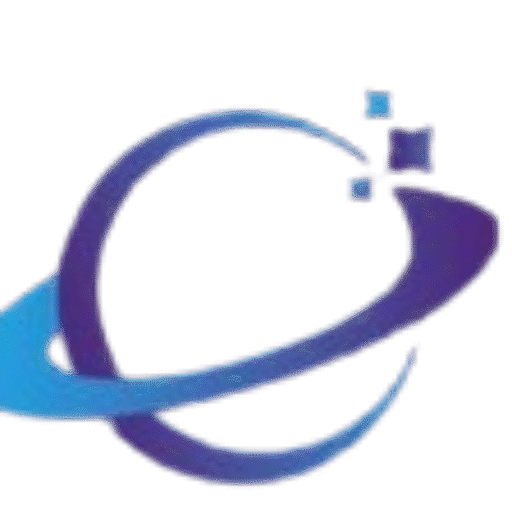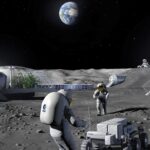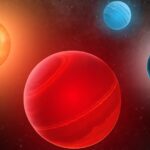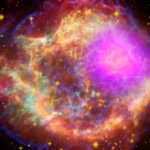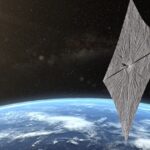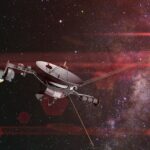For a long time, the famous Hubble Space Telescope was our best eye in space. It gave us beautiful pictures of galaxies and nebulae, and it taught us so much about the universe. But now, we have a new, even more powerful tool: the James Webb Space Telescope (JWST). This amazing machine is like a time machine for light, allowing us to see farther into the past than ever before. It’s helping us answer some of the biggest questions we have about space, like how the first stars were born and if we are alone in the universe.
The James Webb Space Telescope is not just another telescope; it is a whole new way of looking at the cosmos. Its power comes from a special kind of light it can see, a huge mirror, and a clever design that keeps it very, very cold. In this article, we will explore what makes the James Webb so special, how it works, and what amazing things it is helping us discover.
What Makes the James Webb So Special?
The biggest difference between the James Webb and the Hubble is the type of light they see. The Hubble telescope mostly sees visible light, which is the light our eyes can see, and a little bit of ultraviolet light. It’s like a person looking at the sky.
The James Webb, on the other hand, is built to see in a different kind of light: infrared light. We can’t see infrared light with our eyes, but we feel it as heat. Think of a night vision camera. It sees the heat coming off of people and objects. The James Webb is like a super-powerful night vision camera for the universe.
Why is seeing in infrared light so important? The reason is that the universe is always getting bigger and stretching out. When light travels through space for billions of years, it gets stretched out along with space itself. This stretching makes visible light turn into longer, redder wavelengths, which eventually become infrared light. So, to see the very first stars and galaxies from the beginning of time, we have to look for their light in the infrared part of the spectrum.
The James Webb’s ability to see this infrared light is the key to its power. It lets us look back in time and see things that are hidden from other telescopes.
Seeing in Infrared: The Key to Looking Back in Time
Imagine a car driving away from you. The sound of its horn gets lower and lower as it gets farther away. This is called the Doppler effect. The same thing happens with light. As galaxies and stars move away from us, their light gets stretched out and becomes redder. This is called cosmic redshift.
The oldest galaxies in the universe are also the farthest away. They are so far away that their light has been traveling for almost the entire age of the universe. By the time that light gets to us, it has been stretched out so much that it’s no longer visible light; it has become infrared light.
This is where the James Webb comes in. Its main job is to collect this very old, stretched-out infrared light. This allows it to see the very first stars and galaxies that formed more than 13.5 billion years ago. Before the James Webb, these objects were almost impossible to see. Now, we can see them clearly for the first time. It is a true time machine that lets us watch the very first moments of the universe after the Big Bang.
How the James Webb Telescope Works
The James Webb is an incredible piece of engineering. It has three main parts that work together to make these amazing discoveries possible.
The Big, Golden Mirror
The most eye-catching part of the telescope is its massive mirror. It is much bigger than the Hubble’s mirror. The James Webb’s mirror is about 21 feet wide, which is wider than a school bus. It’s so big that it was made in 18 separate pieces, and it had to be folded up like a flower to fit inside the rocket that launched it into space.
Each of the mirror’s pieces is coated in a very thin layer of gold. Gold is used because it is excellent at reflecting infrared light. The mirror’s job is to collect the faint infrared light from distant stars and galaxies and focus it onto the telescope’s cameras and sensors. Because the light is so faint, the mirror has to be incredibly big to collect as much of it as possible.
The Giant Sunshield
The James Webb is designed to see the heat of faraway stars, so it needs to be kept incredibly cold. The telescope’s own heat would interfere with its view, like trying to see a star while holding a flashlight in front of your eyes.
To solve this problem, the James Webb has a huge, five-layered sunshield. The sunshield is about the size of a tennis court. It acts like a giant parasol, blocking heat and light from the Sun, Earth, and Moon. The shield keeps the telescope’s mirror and instruments at a super cold temperature, close to -400 degrees Fahrenheit. This allows the telescope to see the very faint infrared light without being blinded by its own heat.
Where Is the Telescope Located?
The James Webb is not in orbit around the Earth like the Hubble. It’s located about a million miles away from Earth. This location is called the Lagrange Point 2, or L2. This is a special spot in space where the gravity of the Sun and Earth balance out. This allows the telescope to stay in a stable position, always pointing away from the Sun, Earth, and Moon so that its sunshield can do its job perfectly.
Because the telescope is so far away, it is not possible for astronauts to visit it and fix it, as they did with the Hubble. Everything on the James Webb had to work perfectly the first time it was launched.
What Does the James Webb Help Us Discover?
The James Webb Space Telescope is built to answer four main questions about the universe.
1. The First Stars and Galaxies
The telescope’s main goal is to see the very first stars and galaxies that formed after the Big Bang. It is giving us a look at the universe as it was when it was just a baby, a few hundred million years old. These first galaxies were very different from the ones we see today. By studying them, we can learn how the universe grew up and became the place we live in now.
2. How Stars and Planets Are Born
Stars and planets are born inside giant clouds of gas and dust. But these clouds are so thick that they block visible light. The James Webb, with its ability to see through dust using infrared light, can look deep inside these star nurseries. It’s giving us a close-up view of how new stars and planets are forming right now.
3. New Views of Exoplanets
An exoplanet is a planet that orbits a star other than our Sun. The James Webb is a game-changer for studying these planets. It can look at the light from a star as an exoplanet passes in front of it. By doing this, it can figure out what the atmosphere of that planet is made of. This is a huge step forward in our search for other planets that might be able to support life.
4. Our Own Solar System
While the James Webb is built to look far away, it can also give us amazing new views of our own solar system. It is being used to study the atmospheres of planets like Mars and to look at distant, icy moons and objects far beyond Pluto. It’s helping us to understand the history of our own cosmic neighborhood in new and exciting ways.
Why the James Webb Is a Big Deal
The James Webb Space Telescope is more than just a powerful tool for scientists. It is a symbol of human curiosity and our desire to explore. It has been a project that took decades to build, with thousands of people working together to make it a reality.
The images it sends back are not only scientifically important but are also incredibly beautiful. They remind us that the universe is a vast, complex, and wonderful place. It is a telescope that will change our textbooks, inspire a new generation of scientists and astronomers, and help us answer some of the most fundamental questions we have ever asked: “Where did we come from?” and “Are we alone?” Its power to look back in time and explore the cosmos in a new way will shape our understanding of the universe for decades to come.
